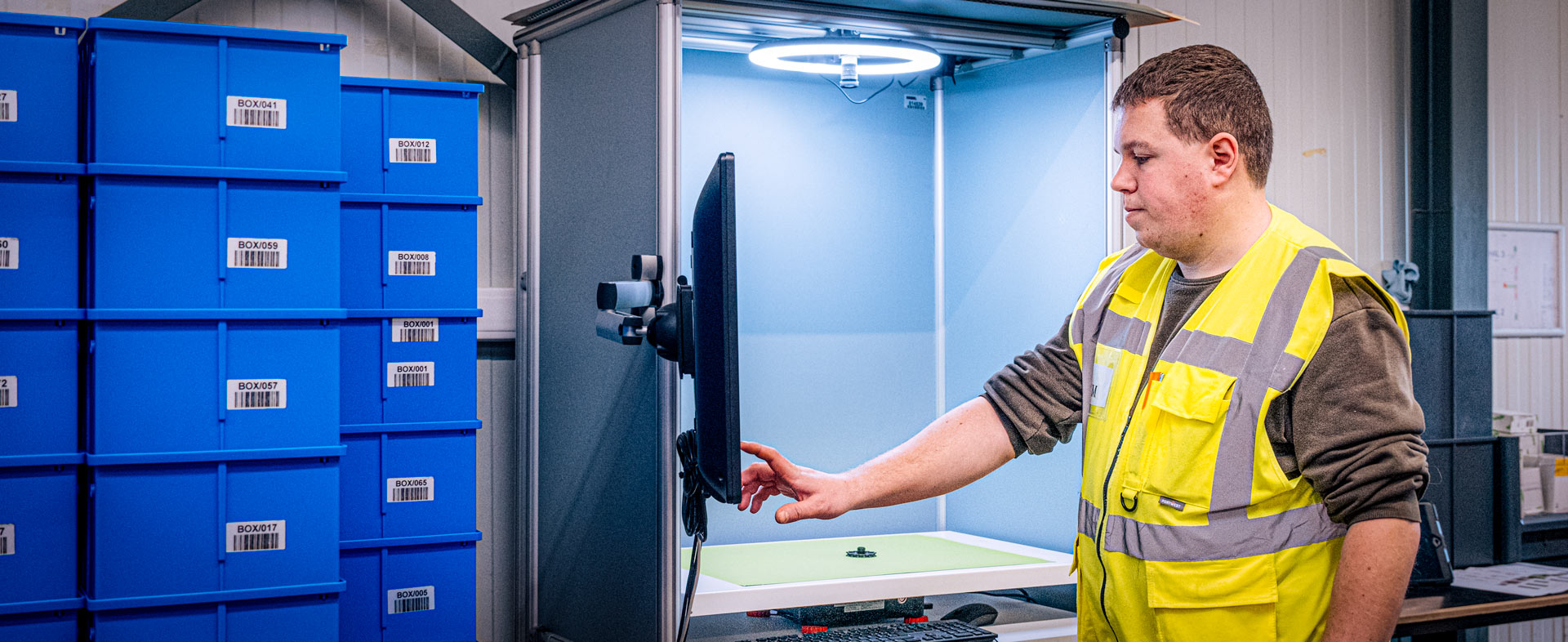Sheltered workplace Bewel explores opportunities offered by Augmented Reality

The Limburg-based sheltered workplace Bewel employs over 2,200 people. "These are people who cannot easily find suitable work due to physical or mental disabilities", says Benny Claes, Technology & Innovation Engineer at Bewel. "With the SESAM project, we want to use augmented reality to make more complex tasks accessible to more of our employees. We achieve this with the help of our partners: Flanders Make, Azumuta and Logflow."
What does 'SESAM' stand for?
"That's short for ‘Sociaal-Economische SAMenwerking’ or, in English, Socio-Economic Cooperation. And with this, you’re also abreast with the basics of this project. We worked together with Flanders Make for the proof-of-concept, Azumuta created the user interface and Logflow helped us to redesign the logistics processes. At Bewel, we believe that cooperation makes us all stronger. Cooperation with other sheltered workplaces, but also within our wider network. By joining forces, we can come up with creative solutions to shared problems. And as we create generic solutions, these can be used for many more applications. That way, cooperation becomes a win-win story."
An admirable mindset! But what exactly does your project entail?
We are exploring how we can use technology to help our employees with their set of tasks. Some employees are quite capable and fairly quickly able to cope with more complex tasks, but this is certainly not the case for everyone. We want to give all our employees the opportunity to enjoy a sense of autonomy in their work. More specifically, we wish to improve our inbound logistics with this project. Our customer sends us components with which we are to build its control cabinets. When those components arrive, they have to be sorted and prepared for installation. There is also an administrative element: it must be checked on the transfer order how many pieces of each component are expected, and whether or not that number matches the delivery people have in front of them. We want to make that whole process easier by identifying components with augmented reality, with a clear display of the component."
We are exploring how we can use technology to help our employees with their set of tasks.
Benny Claes
Technology & Innovation Engineer, Bewel

Where does the project stand today? And what are the next steps?
"In early 2024, the first practicability tests took place. That also marked the first time some of our employees came into contact with augmented reality. The reactions to it were great. Our employees are proud being able to work with technology. Now we have to use the feedback we received to take the project to the next level. Also for this aspect, we want to cooperate with other interested parties.
At the Flanders Make Symposium, a number of other sheltered workplaces already showed interest. Not necessarily to deploy the technology in exactly the same way, but to implement at least part of it in their own operations. And so we continue our journey towards digitalisation and the use of technology in our sector. We all get stronger from that."